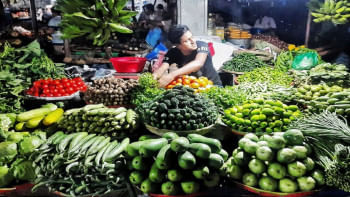Is Bangladesh's economy showing signs of recovery?
As Bangladesh concluded 2023, it faced a series of macroeconomic challenges, including soaring inflation, dwindling foreign currency reserves, a weakened taka against the US dollar, slowing exports, lower-than-expected remittance inflows, and a troubled banking sector. These factors converged, presenting a significant economic turbulence exacerbated by political uncertainties surrounding impending national elections.
However, as we transitioned into the second quarter of 2024, it appears that Bangladesh has managed to evade the immediate crisis, buoyed by policy interventions and improvements in the external environment. Nevertheless, the imperative for structural reforms remains paramount to diversify the economy and foster resilience in the medium to long term.
Urgent monetary reforms, including the implementation of a single exchange rate regime, are critical to bolster foreign exchange reserves and mitigate inflationary pressures. Concurrently, measures aimed at enhancing government revenues to facilitate investments in infrastructure and human capital are essential for sustainable long-term growth.
Following the national elections, there has been a discernible realignment and easing of geopolitical tensions, particularly with Western nations, assuaging concerns regarding Bangladesh's international relations. Moreover, major multilateral and bilateral development partners have reaffirmed their commitment to supporting Bangladesh's development endeavours as domestic consumption as well as private sector entrepreneurship are holding up.
Efforts to address the persistent dollar-taka crisis have yielded some progress, thanks to initiatives by the Bangladesh Bank and commercial banks targeting both demand and supply dynamics in the foreign exchange market. Import restrictions imposed by regulators have curbed the outflow of foreign currencies, leading to a notable decrease in import payments in the first half of the fiscal year.
Remittance inflows have witnessed an uptick, attributable to a surge in manpower exports and a convergence of foreign exchange rates between official banking channels and the informal market. This convergence, coupled with stabilised expectations of further exchange rate fluctuations, has incentivised higher remittance flows.
Furthermore, initiatives such as offering competitive interest rates on dollar deposits and facilitating the use of resident foreign currency deposit accounts have spurred the return of foreign currency holdings to the banking system, augmenting the dollar reserves and alleviating challenges in opening letters of credit for imports to an extent.
Meanwhile, liquidity conditions in the banking sector have improved, owing to measures such as loan rescheduling and restructuring, alongside initiatives by the Bangladesh Bank to inject liquidity through the dollar-taka swaps. These efforts have mitigated the taka crisis and enabled banks to access liquidity facilities as needed.
Despite these positive developments, the World Bank's latest macroeconomic update projects relatively subdued real GDP growth for Bangladesh, highlighting the need for sustained policy and structural reforms. With a projected growth rate of 5.6 percent in the current fiscal year and 5.7 percent in the subsequent year, emphasis on bolstering private consumption amid moderate inflation remains crucial.
While Bangladesh has somehow demonstrated resilience in navigating immediate economic challenges, the focus must now shift towards implementing comprehensive reforms to foster sustainable growth and resilience in the face of evolving global dynamics.
Increased focus is expected on improving the supply side economics, be it commodities or foreign currencies. Official remittance must increase, government revenues must go up, and taking up not-so-worthy projects must reduce. The market must be allowed to behave like other comparable and similar markets.
The author is an economic analyst.

 For all latest news, follow The Daily Star's Google News channel.
For all latest news, follow The Daily Star's Google News channel. 



Comments